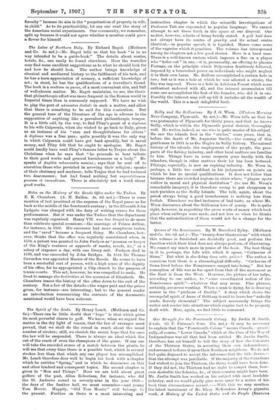Notes on the History of the Revels Office under the
Tudors. By E. K. Chambers. (A. H. Bullen. 3s. 61. net.)—There is some mention of ludi practised at the expense of the Royal purse as far back as the middle of the fourteenth century ; in the fifteenth John Lydgate was charged with the duty of writing verses for these performances. But it was under the Tudors that the department was regularly organised. Henry VII. was too frugal to do more than celebrate special occasions,—the marriage of Prince Arthur, for instance, in 1501. His successor had more sumptuous tastes, and the " revel " became a frequent thing. Mr. Chambers, how- ever, thinks that the office was regularly constituted when, in 1534, a patent was granted to John Farlyon as "yeoman or keeper of the King's vestures or apparels of masks, revels, &c.," at a salary of sixpence a day, with one livery suit. Farlyon died in 1539, and was succeeded by John Bridges. In 1544 Sir Thomas Cawarden was appointed Master of the Revels. He seems to have been a masterful sort of person, with a high sense of the dignity of his office, for he appropriated a City church to the purpose of tennis courts. This act, however, he was compelled to undo. He lived to manage the festivities at the accession of Elizabeth. Mr. Chambers traces the history of the office down to the end of the century. Not a few of the details—the wages paid and the prices given, for instance—are interesting; but to the general reader an introduction summarising the contents of the documents mentioned would have been welcome.






































 Previous page
Previous page